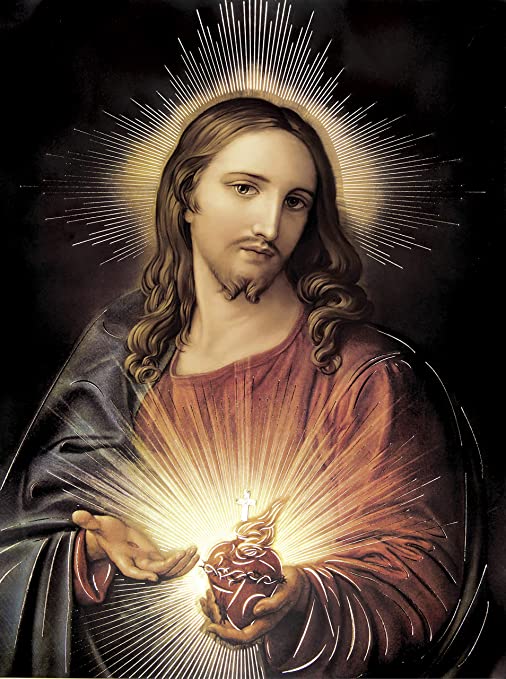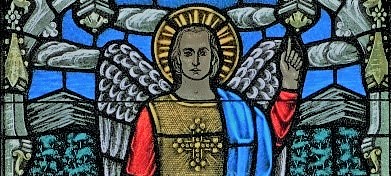
The Sacred Heart is among the less familiar and less known of Anglican-Catholic devotional images. But its symbolism is profound and inspiring. As we marked the Feast of the Sacred Heart this week, here is a look at the explanation behind some of the features of the Sacred Heart.
The flames
The Sacred Heart most obviously brings to mind the Passion of Christ on the cross. There is the crown of thorns, the cross, usually atop the heart, and the wound from the spear that pierced His side. But why is the Sacred Heart always shown as if it’s on fire? That certainly did not happen at the crucifixion.
There are three reasons behind this. First, we have to remember that Christ’s self-offering on the cross was the one-time perfect consummation of all the sacrifices of the Old Testament. This necessarily includes burnt offerings, which were the highest form of sacrifices in ancient Israel, according to The Jewish Encyclopedia. An early form of such sacrifices was what Abraham set out to do with Isaac, hence the wood he had his son collect beforehand.
Second, fire is always associated with the essence of divinity in the Old Testament. Think back to the burning bush that spoke to Moses, the cloud of fire that settled on Sinai, and the flames from above that consumed the sacrifice of Elijah. This explanation fits with the gospel account of the crucifixion, in which the piercing of Christ’s side revealed His heart at the same time that the curtain of the temple was torn, unveiling the holy of holies where God was present.
Finally, the image of fire associated with heart represents Christ’s passionate love for humankind. One traditional exclamation is, “Sacred Heart of Jesus, burning with love of us, inflame our hearts with love of Thee.” We see this actually happen in the gospels, where the disciples on the road to Emmaus realized that their hearts had been “burning” after their encounter with Jesus.
The rays of light
Look closer at the image of the Sacred Heart. There is something else framing it besides the flames. They are rays of light. In John 8:12, Christ declares that He is the “light of the world.” In Revelation 21:23, we are told that in the new Jerusalem at the end of times there will be no light from the sun or moon because the Lamb of God—that is, Jesus—will be its source of light. Light, like fire, is a symbol of divinity. Think of the Transfiguration and the blinding light that Paul experienced on the road to Damascus. As the light of the world, Christ is also the one who “enlightens” us, revealing God to us. The Sacred Heart constitutes the climax of divine self-revelation, showing us the depths of God’s love.
The cross
Like the thorns, the cross is both rooted in the gospels but also displayed in a way that does not follow them in every detail. There is almost an inversion of the crucifixion. In the gospels, Christ hung on the cross, His heart correspondingly dwarfed by its beams. But in images of the Sacred Heart, it is now enlarged and the cross has shrunk. Moreover, rather than the heart being nailed to the cross, the cross now seems ‘planted’ in the heart as if to say to us that the entire reality of the crucifixion derives its meaning from and—cannot be understood apart from—the heart of Jesus.
The crown of thorns
Unlike the arrows, the crown of thorns is reported in the gospels. But in traditional images it encircles the Sacred Heart, whereas in Scripture the crown was fixed to Jesus’ head. One traditional account offers this interpretation, describing those who are devoted to it: “They saw the crown transferred from His head to His heart; they felt its sharp points; They saw the crown transferred from His head to His heart; they felt that its sharp points had always pierced there; they understood that the Passion was the crucifixion of a heart”. In other words, wrapping the crown around the heart emphasizes the fact that Christ felt His wounds to the depths of His heart.
Moreover, after the resurrection, the crown of thorns becomes a crown of victory. Donnelly hints at this as well: In ancient gladiatorial contests, the victor was crowned. In the Revelation 19:12, Christ wears “many crowns” and believers who are victorious over sin and Satan will receive the “crown of life” (Revelation 2:10).


